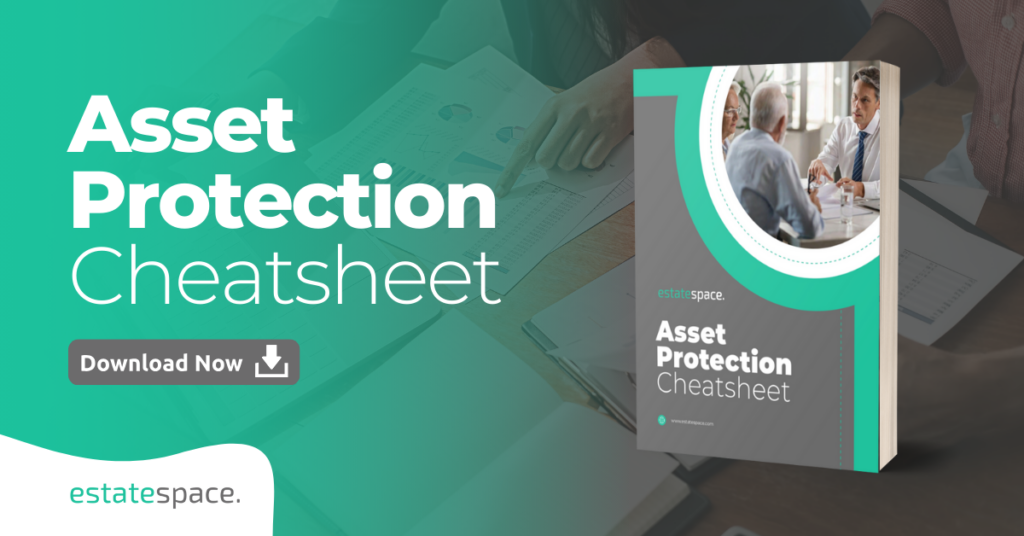Managing complex portfolios for family offices or large real estate firms goes far beyond financial tracking. You oversee multimillion-dollar properties, valuable assets, and intricate portfolios, requiring more than traditional tools like spreadsheets and emails. As these portfolios grow in complexity, so too must the systems used to manage them. The right real estate asset management softwarecan deliver increased operational efficiency, enhanced security, and measurable ROI—driving long-term success for your organization.
Why Traditional Tools Fall Short for Real Estate Asset Management
Spreadsheets: Risky and Outdated
For years, spreadsheets have been the go-to tool for managing assets. However, as your real estate portfolio grows, so do the limitations of this manual tool:
- Outdated Information: Asset values fluctuate regularly. Without real-time updates, spreadsheets often reflect yesterday’s numbers, leading to outdated decisions.
- Human Error: Manual data entry is prone to mistakes. A single error in a formula or input can result in costly miscalculations and missed opportunities.
- Limited Accessibility: When you’re managing large portfolios across different locations, having information locked in a spreadsheet that’s not easily accessible on the go can slow down decision-making.
In the high-stakes world of real estate asset management, relying on spreadsheets is not just inefficient—it can be a liability. Transitioning to real estate asset management software eliminates these risks by offering real-time updates, automated processes, and enhanced accessibility.s simply can’t keep up with the demands of tracking and managing multimillion-dollar properties.
Emails: An Inefficient Management Tool
While email is indispensable for communication, relying on it for managing high-value assets introduces significant challenges:
- Data Overload: Vital information often gets lost or buried in the daily flood of emails, leading to missed details that are crucial for effective asset management.
- Security Risks: Sending sensitive financial data over email leaves your firm vulnerable to data breaches and unauthorized access.
- Time Sink: Email management consumes an enormous amount of time—time that could be better spent on strategic decision-making. The clutter of daily emails not only lowers productivity but also increases the risk of overlooking important tasks.
By consolidating communications and asset information into a secure platform, real estate asset management software minimizes these inefficiencies and significantly reduces security vulnerabilities. to centralize communications and store sensitive information securely, improving both efficiency and security.
The ROI of Real Estate Asset Management Software for Executive Leaders
For any executive, the success of new technology is measured by the returns it provides. The shift to real estate asset management software can lead to clear, measurable improvements in key areas, offering substantial ROI.
Streamlined Operational Efficiency
One of the most impactful benefits of implementing asset management software is the automation of routine tasks, freeing up valuable time and resources. Automating workflows, from maintenance scheduling to asset performance tracking, reduces the manual workload and drives efficiency. This leads to:
- 30% reduction in time spent on administrative tasks related to property management.
- Faster decision-making through real-time updates on property statuses and financial data.
- Optimized workflows that allow your team to manage more properties with fewer resources.
These operational efficiencies not only reduce costs but also enable your team to focus on high-value tasks, increasing both productivity and profitability.
Enhanced Security and Risk Mitigation
For organizations dealing with high-value real estate assets, security breaches can have catastrophic financial consequences. The right real estate asset management software significantly reduces these risks by offering:
- End-to-End Encryption: Data is encrypted both in transit and at rest, safeguarding sensitive financial and asset-related information.
- Role-Based Access Controls: Access to critical data is restricted to authorized personnel, minimizing internal security threats.
- Audit Trails: A complete history of who accessed or modified data ensures transparency and accountability, providing protection against fraud or unauthorized actions.
Reducing the risk of human error and data breaches not only protects your organization’s assets but also builds trust with clients, partners, and stakeholders. The potential savings from avoided security incidents and reduced legal exposure further contribute to the platform’s ROI.
Increased Asset Visibility and Performance
Visibility across your entire portfolio is critical for making informed decisions. With real estate asset management software, you can monitor performance, identify underperforming assets, and optimize investments—all from a single platform. The result is:
- 10-15% improvement in asset performance through real-time insights and proactive management.
- Proactive maintenance scheduling, which extends asset lifespan and reduces the risk of costly emergency repairs.
- Comprehensive portfolio transparency, allowing for better decision-making around acquisitions, disposals, and financial strategies.
These improvements not only enhance asset performance but also contribute to long-term financial growth for your organization.
Implementing Real Estate Asset Management Software with Your Team
Successful implementation of new technology requires strategic planning and the involvement of both internal teams and clients. The following best practices will help ensure smooth adoption and sustained value from your investment in real estate asset management software.
Internal Team Adoption
- Engage Key Stakeholders Early: Involve your leadership and operational teams in the decision-making and implementation process. Their buy-in is critical for company-wide adoption.
- Provide Thorough Training: Offer detailed training to ensure your team understands how the platform works and how it benefits their daily tasks. Focus on automating repetitive tasks to free up their time for strategic work.
- Emphasize Security: Make sure your team understands the platform’s security features, including encryption and access controls. Implement best practices for data security, such as strong password management and secure data sharing.
Client Adoption
- Enhance Client Transparency: Show your clients how the software gives them real-time visibility into their assets, allowing them to track performance and value more easily.
- Secure Client Data: Assure clients that their sensitive data is protected by the platform’s robust security features. Role-based access and encryption will protect their financial information and instill confidence in your services.
Pro Tip: Start with a Phased Implementation
Rather than rolling out the software across the entire organization all at once, consider starting with a small pilot group. This allows you to address any potential issues early, refine your processes, and ensure a smoother transition for the rest of the team and clients.
Security as a Priority in Software Selection and Adoption
For organizations managing multimillion-dollar real estate assets, security is not just an operational consideration; it’s a critical aspect of long-term success. Choosing the right real estate asset management software must prioritize robust security features to protect your data and your clients’ trust.
- Data Encryption: All sensitive data is encrypted, reducing the likelihood of breaches during transmission or while stored in the system.
- Access Controls: Limit who can view or edit key information through role-based permissions. This ensures that only authorized personnel can access sensitive financial and asset-related data.
- Detailed Audit Logs: Maintain a clear record of who accessed or altered information, creating a transparent and accountable system that reduces internal risk.
These features not only protect your firm’s data but also demonstrate your commitment to safeguarding client information, reinforcing your reputation as a trusted advisor in real estate asset management.

Driving Operational Excellence with EstateSpace
When it comes to managing large, complex real estate portfolios, the limitations of traditional tools like spreadsheets and emails are clear. The risks of outdated information, human error, and security breaches are simply too great. EstateSpace, a leading solution in real estate asset management software, addresses these challenges head-on by offering a platform that streamlines operations, enhances security, and provides real-time data for better decision-making.
With EstateSpace, you can expect:
- Real-time access to data: EstateSpace provides immediate insights into property values, asset conditions, and financial updates, ensuring your team makes informed decisions quickly.
- Advanced security features: EstateSpace uses end-to-end encryption and role-based access controls to protect sensitive data, offering peace of mind to you and your clients.
- Automated workflows: Automate routine tasks like property maintenance, financial reporting, and asset tracking to reduce manual work and optimize team productivity.
By implementing EstateSpace, you’ll see a tangible improvement in asset performance, reduced operational costs, and enhanced data security—key factors that contribute directly to the long-term success of your organization.
In a competitive real estate landscape, leveraging cutting-edge technology is no longer optional—it’s essential. EstateSpace offers the real estate asset management software you need to transform your operations, mitigate risks, and deliver meaningful ROI.





